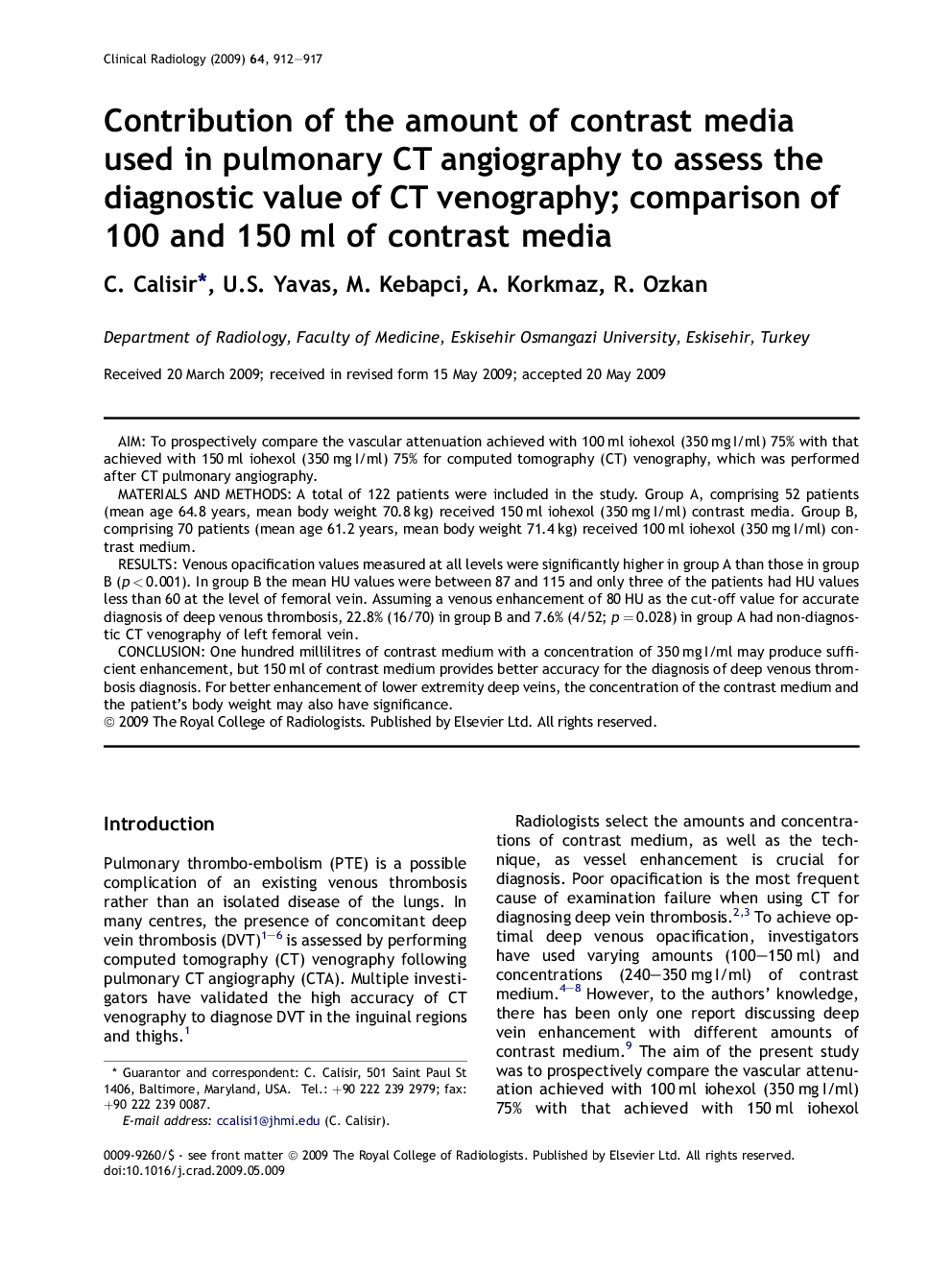| Article ID | Journal | Published Year | Pages | File Type |
|---|---|---|---|---|
| 3984055 | Clinical Radiology | 2009 | 6 Pages |
AimTo prospectively compare the vascular attenuation achieved with 100 ml iohexol (350 mg I/ml) 75% with that achieved with 150 ml iohexol (350 mg I/ml) 75% for computed tomography (CT) venography, which was performed after CT pulmonary angiography.Materials and methodsA total of 122 patients were included in the study. Group A, comprising 52 patients (mean age 64.8 years, mean body weight 70.8 kg) received 150 ml iohexol (350 mg I/ml) contrast media. Group B, comprising 70 patients (mean age 61.2 years, mean body weight 71.4 kg) received 100 ml iohexol (350 mg I/ml) contrast medium.ResultsVenous opacification values measured at all levels were significantly higher in group A than those in group B (p < 0.001). In group B the mean HU values were between 87 and 115 and only three of the patients had HU values less than 60 at the level of femoral vein. Assuming a venous enhancement of 80 HU as the cut-off value for accurate diagnosis of deep venous thrombosis, 22.8% (16/70) in group B and 7.6% (4/52; p = 0.028) in group A had non-diagnostic CT venography of left femoral vein.ConclusionOne hundred millilitres of contrast medium with a concentration of 350 mg I/ml may produce sufficient enhancement, but 150 ml of contrast medium provides better accuracy for the diagnosis of deep venous thrombosis diagnosis. For better enhancement of lower extremity deep veins, the concentration of the contrast medium and the patient's body weight may also have significance.
